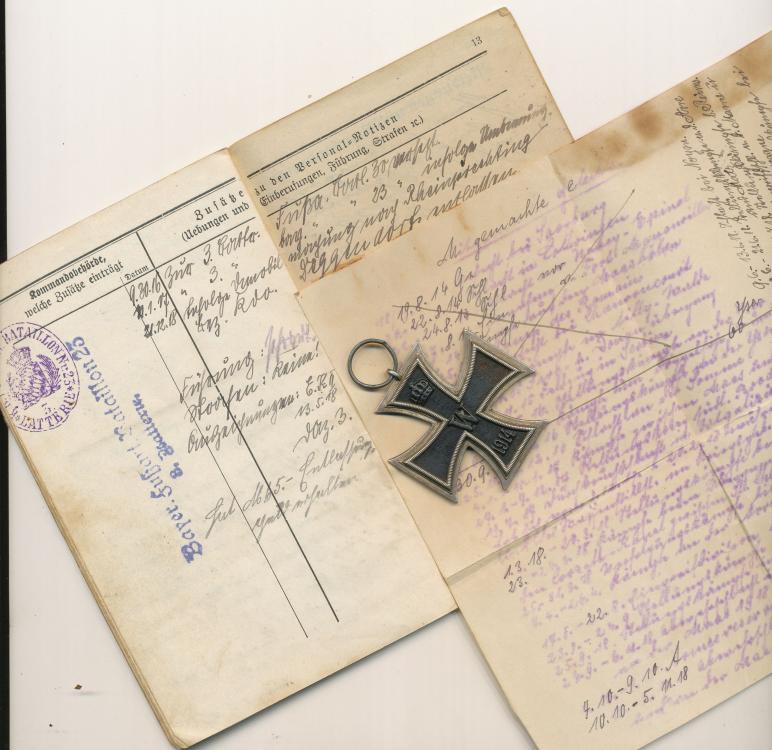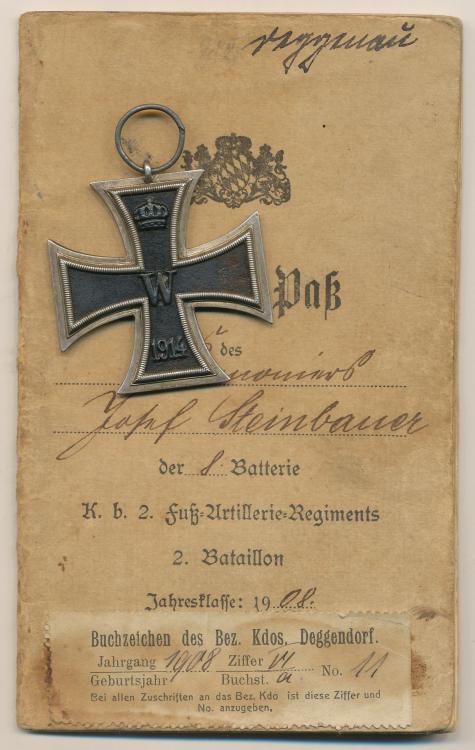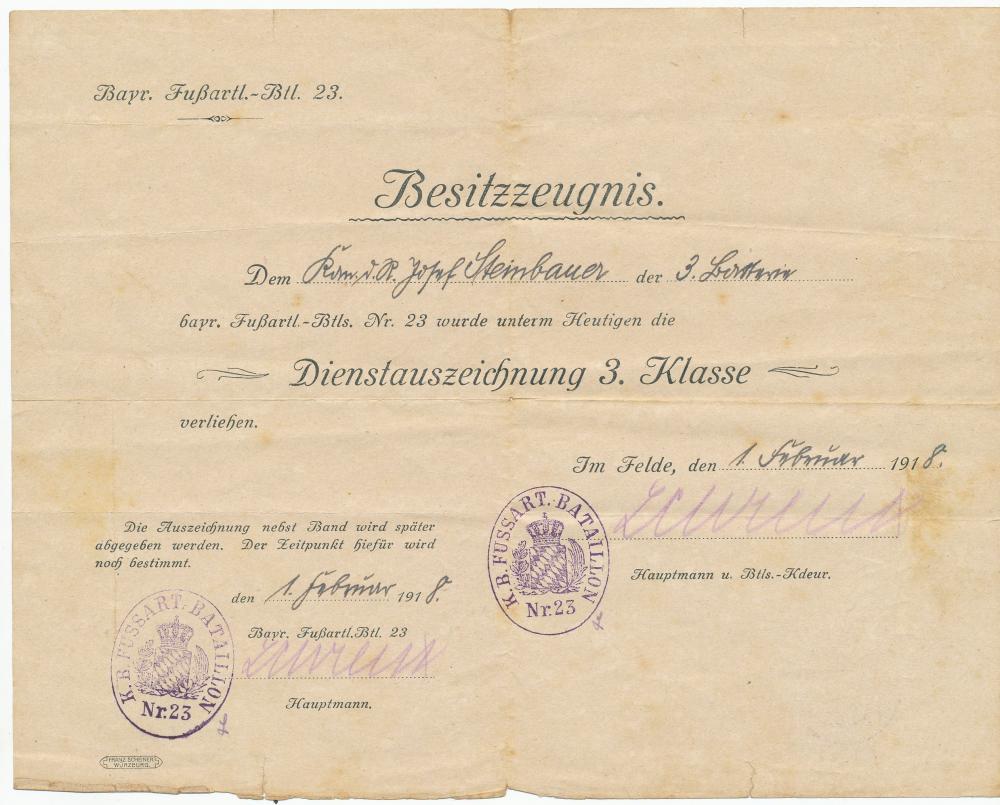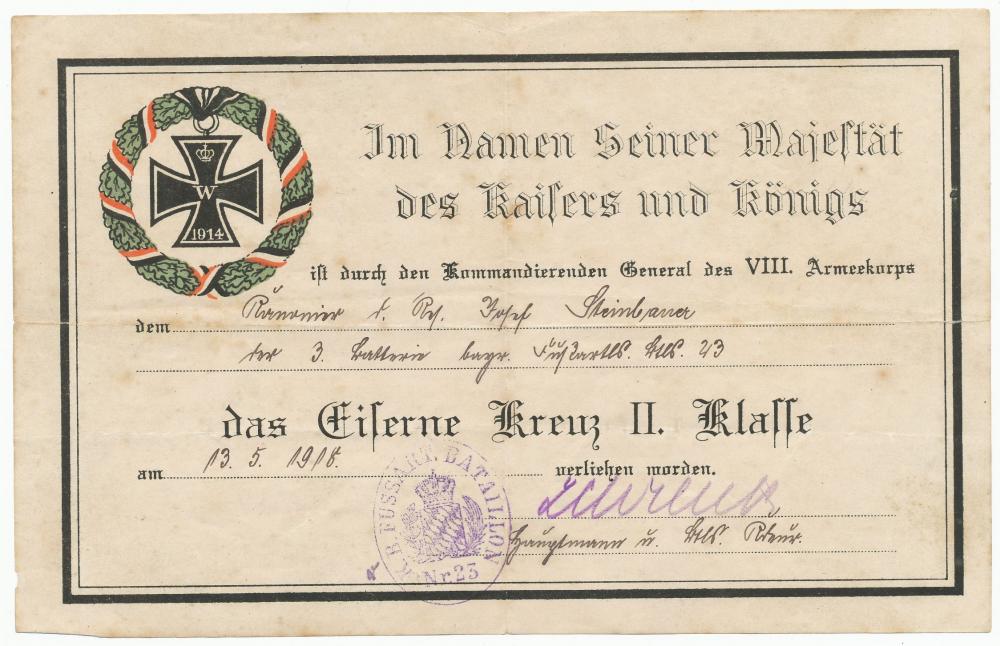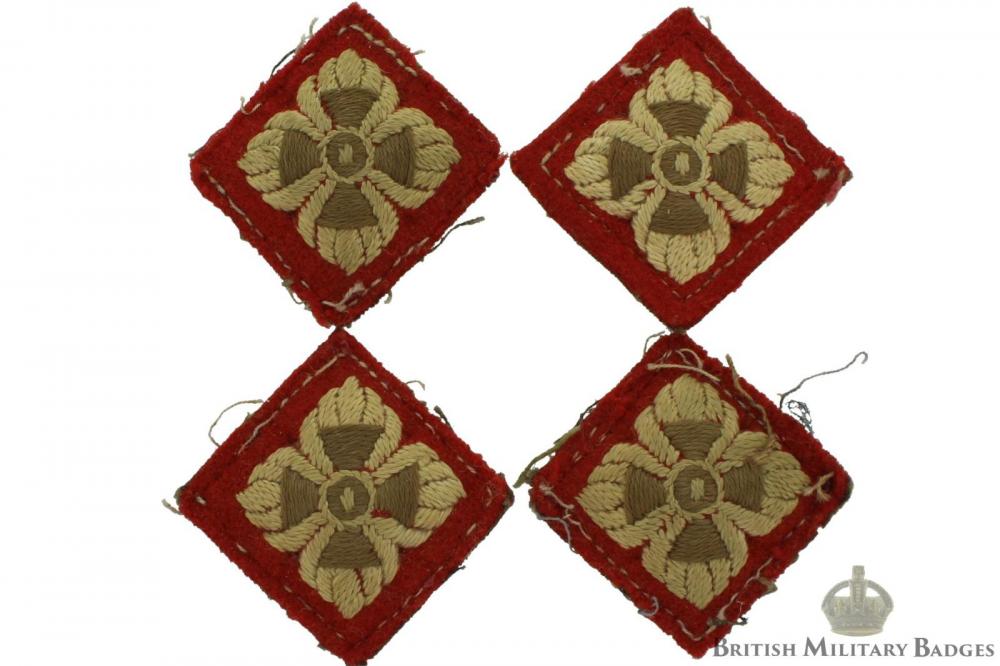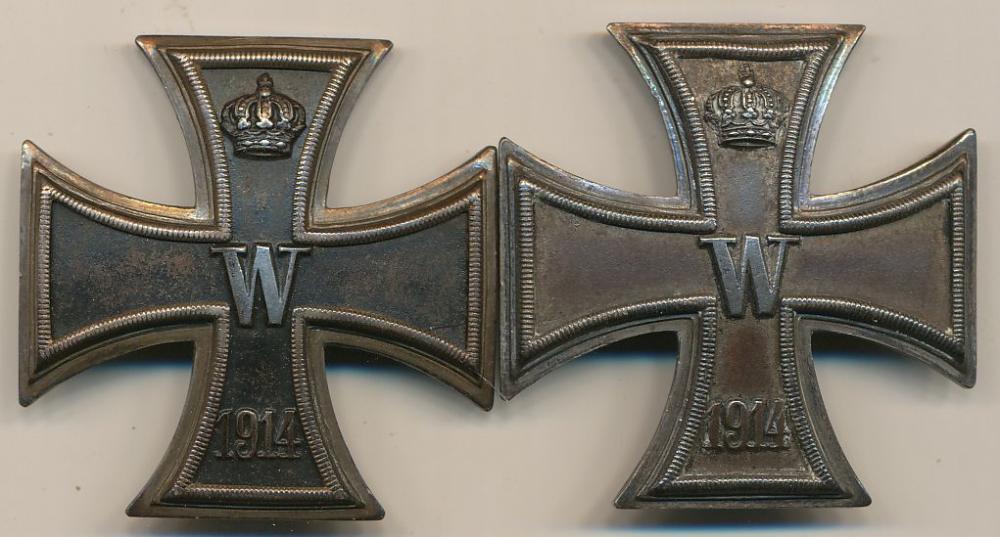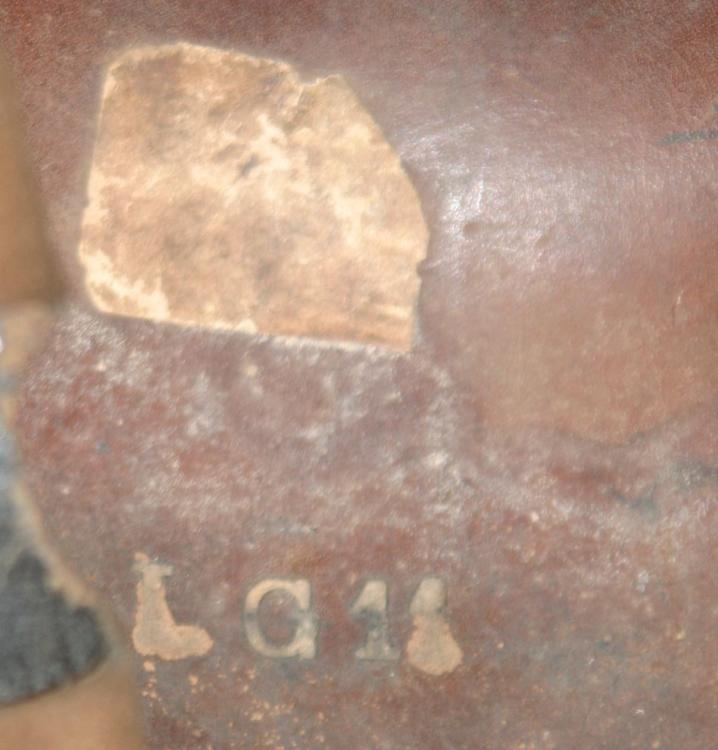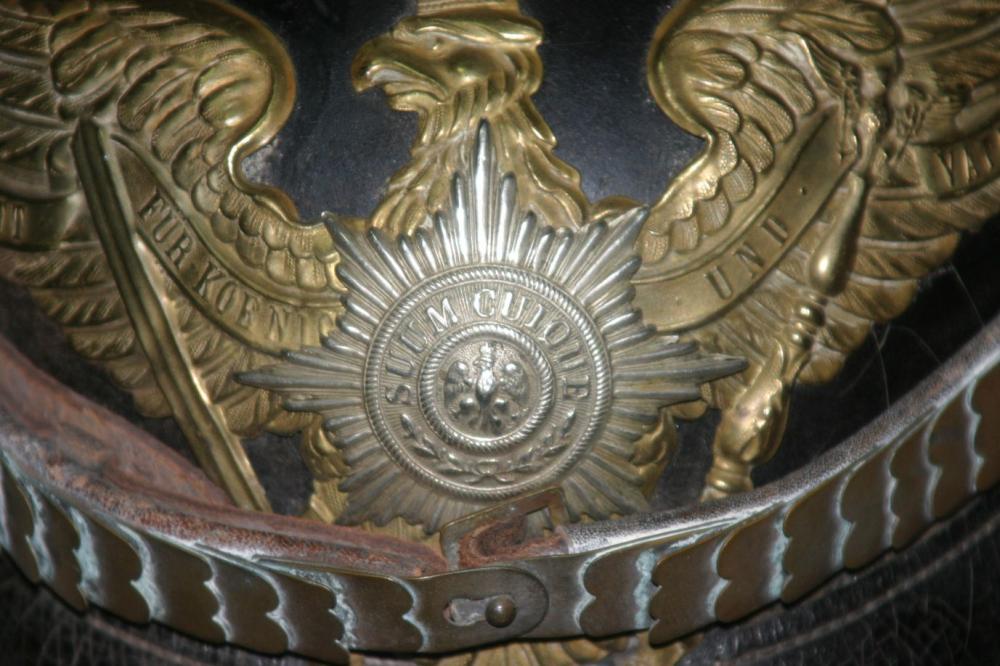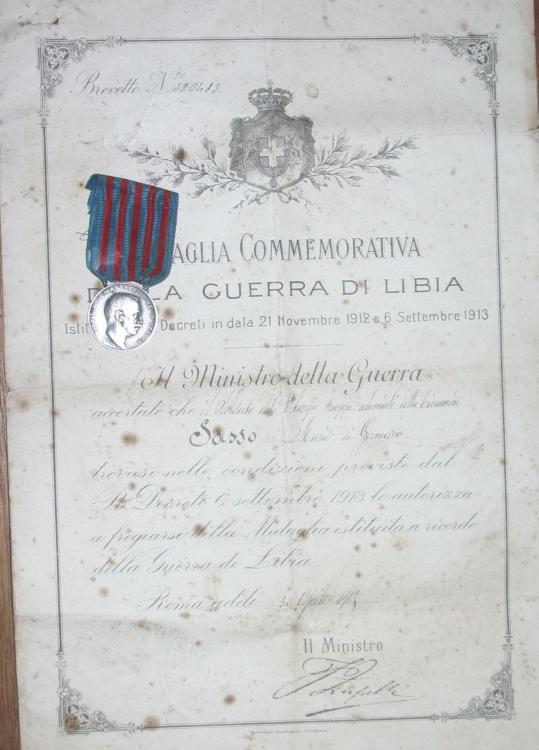-
Posts
29,251 -
Joined
-
Last visited
-
Days Won
84
Content Type
Profiles
Forums
Blogs
Gallery
Events
Store
Everything posted by Chris Boonzaier
-

The REAL Early crosses....
Chris Boonzaier replied to Chris Boonzaier's topic in Germany: All Eras: The Iron Cross
The reason this intitial thought popped up at all was an almost automatic thing on dealers sites, and on forums, to differentiate between 1) Issue crosses (Stamped with code) 2) Private Purchase (Company names, "800" or no name) And for me this is no way clears up what 1914 crosses would have had.... I am betting a 1914 issued EK2 could well have had a blank ring... but on many dealers sites that would be considered a private purchase piece... And this is all stuff we "know" ... inspite of the fact that we have no idea when the system of one and 2 letter codes was introduced... and what there was before that... -

The REAL Early crosses....
Chris Boonzaier replied to Chris Boonzaier's topic in Germany: All Eras: The Iron Cross
Hi, Even with the introduction of other techniques, do we know when all companies stopped sandcasting? It could well be that there was a firm out there who could not afford new technology and continued sandcasting up until 1918? -

The REAL Early crosses....
Chris Boonzaier replied to Chris Boonzaier's topic in Germany: All Eras: The Iron Cross
"Secondly - and this opinion is more food for thoughts than argument - there was no reason for jewelers to hurry at the beginning of ww1. Their experience was different, that it seems from our "Divine" perspective (in the sense that we know what happened next). They knew there was postwar "verliehung" after Napoleonic wars, as well as after Franco-Prussian war. " I think this is an error.... we assume that, or have assumed it for years, because of the dates on the postwar award documents... in fact, the awards were made earlier to that. I think the 1870s roll shows most awards were made during the war... There also does not have to be a hurry, but fact is, there were 100 000 crosses awarded by the end of 1914, and they had to come from somewhere.... -

The REAL Early crosses....
Chris Boonzaier replied to Chris Boonzaier's topic in Germany: All Eras: The Iron Cross
Hi, Some interesting thoughts so I will take them point by point.... I would have been surprised if the stamps would have remained the same... we are talking about a 40 year passage of time... Most companies, whether medal companies, dagger companies or Burger king have changes to their logos over time... I would be etremely surprised, even fact that Godet made issue crosses in 1914, that the logo stayed the same. -

The REAL Early crosses....
Chris Boonzaier replied to Chris Boonzaier's topic in Germany: All Eras: The Iron Cross
Hi, all with the sandcast core? I would be intereted to see examples of accepted early ones if anyone has any? Best Chris -
Not my direct collecting field, but it happened my way... Bayerische Fussartillerie Bataillon Nr. 23 Kanonier der Reserve Josef Steinbauer (3. Batterie) The award was made on the 13th of May 1918 by the VIII Armeekorps. The document signed by Hauptmann Otto Schrenk, Bataillons Kommandeur. Fussartillerie Units were usually permanently attached to Army Corps which is why the awards are usually made at A.K. level. Joseph Steinbauer had served in the 2. Bayerische Füssartillerie Regiment from 1908-1910. He was a qualified “Bedinungs Kanonier” (Gun Crew member) on 10cm and 15cm Guns. He mobilized in 1914 with the bay. Füssartillerie Bataillon 30 and fought in Lorraine, at Nancy – Epinal including the fighting for Fort Manonviller. Transferring to the Bayer. Fussartillerie Bataillon 23 in January 1917 he fought until the end of the war including actions in the Ailly-Wald, Serbia, Galizia, Flanders, on the Somme, the 1918 Spring offensives, Montdidier-Noyon, Rheims etc. Hauptmann Schrenk, the Battalion commander, described the movements of the Battalion during the Spring Offensive in 1918 “The Battalion was attached to the 103rd Infantry division from the 21st of March. On the 21st and 22nd the breakthrough at St. Quentin and La Fere, the 23rd and 24th fighting to cross the Crozat Canal between St. Christ and Tergnier. Between the 25th and 31st of March the fighting pursuit at Montdidier and Noyon. During this time the Battalion was under the command of a different division every couple of days including the 3rd Bavarian division on the 30th and 31st of March. The Battalion was thrown into the line wherever things were critical. Of special note was the bitter fighting on the Avre in front of Moreuil-Morisel where the Battery found itself in an inferno in the true sense of the word as it was here that the French had massed their forces, including large amounts of artillery, fearing a breakthrough to Amiens. The Battalion, in particular the 3rd battery suffered immensely, many brave gunners and drivers found their end in this valley of death. The ammunition supply columns also deserve a special mention for their brave actions.” It was in this sector in May 1918 that Steinbauer received his Iron Cross 2nd class. He has spent 45 months at the Front. He is a prime example for the argument that the Iron Cross was not “cheapened” in WW1.
-

The REAL Early crosses....
Chris Boonzaier replied to Chris Boonzaier's topic in Germany: All Eras: The Iron Cross
Indeed, I imagine that the first people to start making them would have been those who were tooled up and making/had made 1870 crosses? 1870 EK2s were not marked.... would it be an illogical conclusion that the first 1914 crosses were probably made the same way? Control initials only coming later? There were not many makers of 1870 EK1s, could we assume that for at least 1914 it would have been the same firms? If it were... would they not have started off doing what was done before? i.e. The EK1s stamped "Godet" are condidered Private Purchase, the ones stamped "G" award pieces... could it not be that the "Godet" ones were the first early ones, with a full name, like done before.... and later when the control letters were introduced, they changed to "G" ? You are correct, a company driven by profit is the fastest horse out of the box, but I am guessing it took a few months before anyone realised how "big" this thing was and how many EKs were needed? Somehow I think the rethink is needed, I really believe we are overlooking a period here... -
I think it is accepted that OFFICIAL issue crosses were flat with a makers code on the back, this code being used as a quality control by the office responsible for orders. Here is my thought for the day.... Can we really assume that the Germans had a system in place from Day 1 to have the above system in place? That at a time where folks thought the war would be over by X-Mas and had no idea how many EKs would be awarded, where they had initially not even thought of printing preliminary award documents... that they already had a plan to have makers use a coded system on Iron Crosses? How do you imagine the crosses issued in 1914 were stamped? All th ebest Chris



